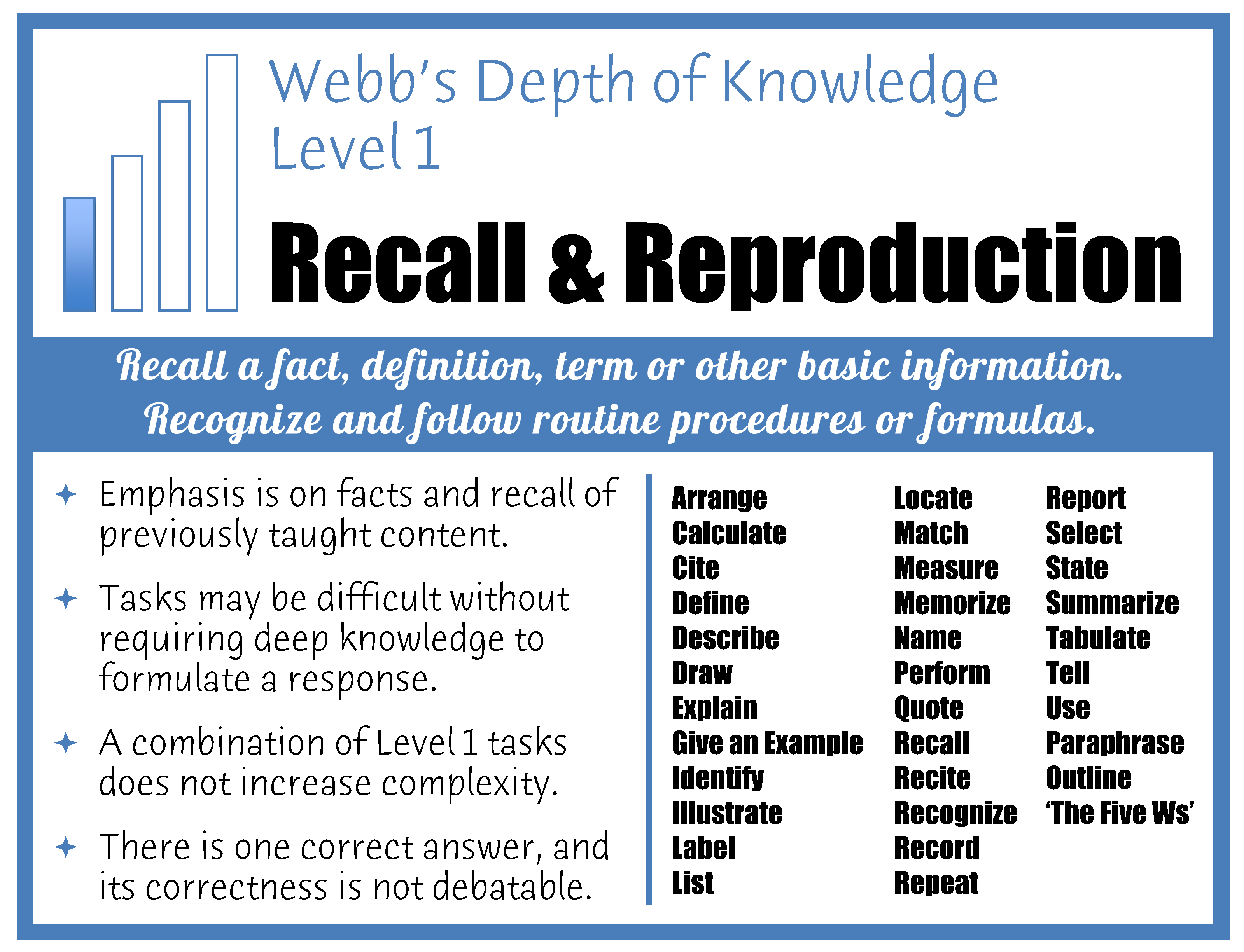

Students must reason or plan to find an acceptable solution to a problem. Student must make sense out of written notation and perform.If the student interprets the rhythm (as opposed to repeating) it is DOK 2.Item Why is this DOK 2? Examples of DOK 2 in Music Students use basic aural skills such as hearing intervals or adjusting pitch. Students learn notes and fingerings in DOK 1, then apply the skill at DOK 2.

DOK 2ĭOK 2 in Music This is where the student begins to play an instrument or sing in context. Students must explain“how” or “why” and often estimate or interpret to respond. Main ideas – requires deeper knowledge than just the definition. Requires comparison of two or more concepts, finding similarities and differences, applying factual learning at the basic skill level.

Several other states (at least 20) use DOK to evaluate the rigor of their state assessments. Norman Webb, senior research scientist at the National Institute for Science Education. What Does DOK Accomplish?ĭeveloped by Dr. Provides cognitive processing ceiling (highest level students can be assessed) for item development. Why Use DOK?Įnsures that the intent of the standard and the level of student demonstration required by that standard matches the assessment items. States must adopt a system to guarantee that alignment. NCLB requires that each state develop rigorous standards (Show-Me Standards) and align their state assessment (MAP and EOC) to those standards. Measures the degree to which the knowledge elicited from students on assessments is as complex as what students are expected to know and do as stated in the state standards. Depth of Knowledge in Music Steve Williams DESE Fine Arts Consultant Presented at: Missouri Music Educators Association January 30, 2009


 0 kommentar(er)
0 kommentar(er)
